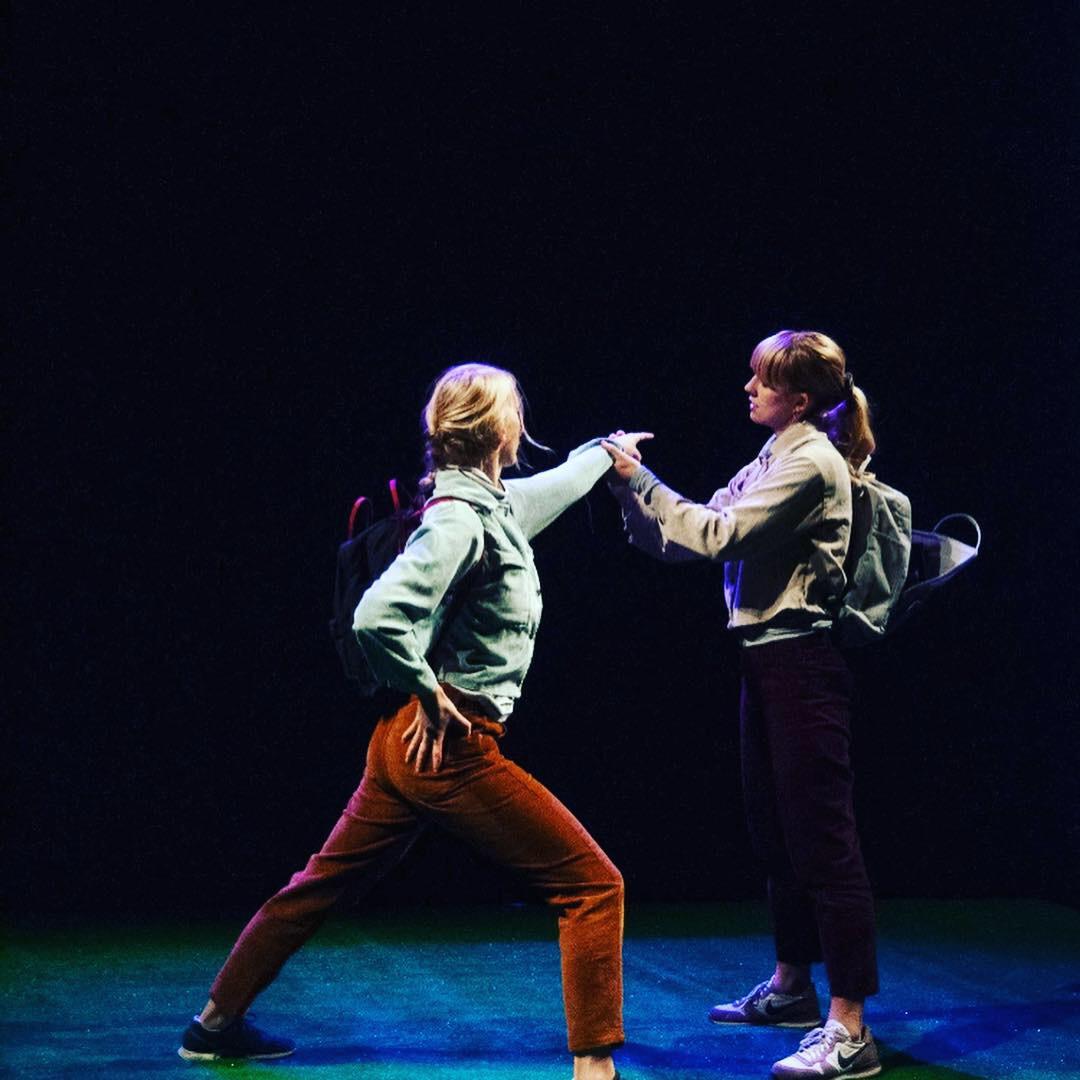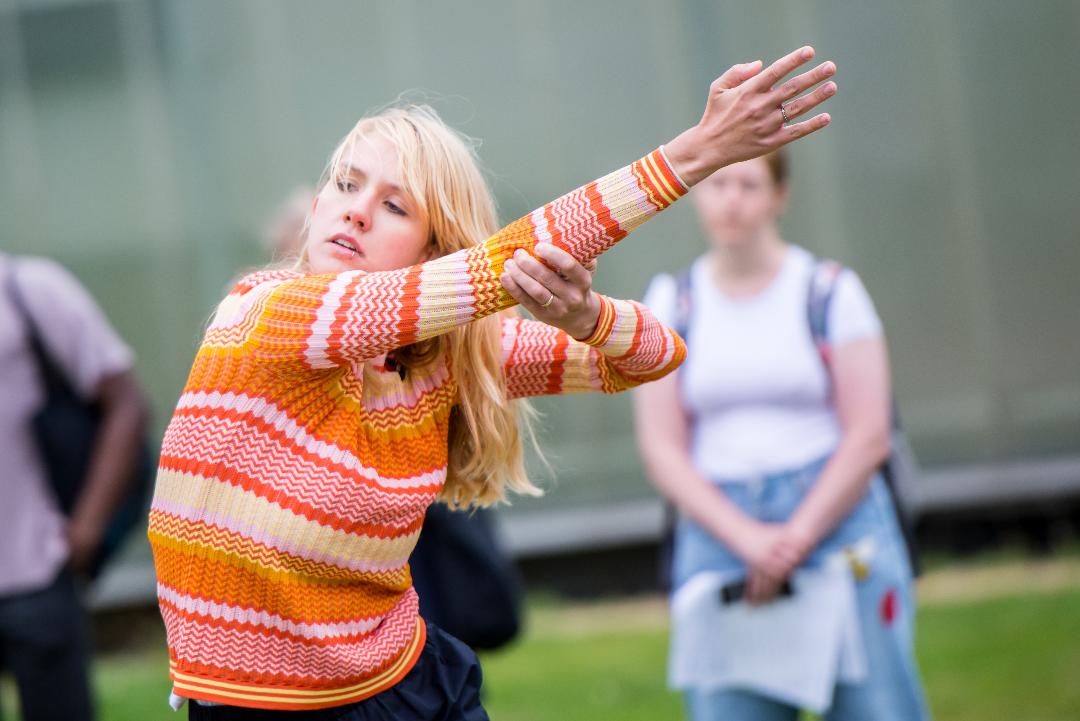Words by Katie Hagan.
In a time where (some) world leaders are doing just about nothing to save us from political, social and environmental turmoil, it is encouraging to know we can depend on today’s dance artists to support us in our attempts to incite change and celebrate differences.
This collective approach is at the core of dance artist and choreographer, Greta Gauhe‘s practice. Having studied at Trinity Laban and The Place, Greta creates choreographies which border physical theatre and tanztheater, weaving what is most important about the human experience into her honest, bold and beautifully-nostalgic works.
She sits with the dance art journal to discuss her practice, her works NOWhere and Common Ground, and the difficulties she faces as an artist in today’s precarious climate.
Q: Could you take us through your work Common Ground? What’s your practice?
A: I often draw ideas from social or political issues which frustrate me. Art does have the power to challenge behaviour and I feel we should make use of this potential.
In this way, I hope to be able to point out how important it is to connect with others in a positive way. Only in this way we can evoke the changes needed for a better future.
I choreographed Common Ground for the Resolution Festival in 2019. In Common Ground, seven dancers attempt to build a community which celebrates diversity, but also the individual.
The overarching aim is to accommodate idiosyncrasies, yet inevitably this creates friction. Interacting and connecting, the dancers negotiate boundaries, accept differences and declare togetherness as a common, mutual decision. Groups form, merge, and dissolve whilst the dancers break social norms and create a common identity.
What the final piece looks like remains open until quite late in the process. During rehearsals, me and my team approach topics by relating them to our own experiences or feelings. In this way, my dancers do not take on a character but deal with their own past, which feels more real and honest. On stage, the stories of my dancers co-exist and interact.
Q: Why did you decide to create your own company?
A: I created the Follow Through Collective in 2015, after graduating from Trinity Laban with a BA(Hons) in Dance Theatre. I have always been interested in making my own work and was keen to start choreographing straight after graduation. The Collective was a means to assemble other professionals around me, who were often in a similar situation.
I chose the term ‘collective’ to emphasise an eye-level collaborative character, both between dancers and choreographer, but also any other art form involved. I started the Collective with my dear friend Ella Funk, who is a filmmaker based in Berlin. Over the years, the list of collaborating artists has expanded, and I now have a very valuable network of friends and artists on my side.
Q: What makes a collective so powerful? As an ideology and as a physical body of dancers?
A: A collective gives the opportunity to feel connected to something bigger than oneself; it is an opportunity to feel connected to others while working on a bigger aim.

People in a collective can often make better decisions when they combine the different perspectives, skills and knowledge of their members. That given, cross-sector collaborations are important so that people can learn from each other and share their knowledge for a bigger aim. Having a collective can be a powerful tool today to evoke change and to connect to other like-minded people.
The same ideology can be translated to a dance collective. You feel less alone and you have people around you that you can trust. Today, that seems more valuable than ever.
Q: Your work has been compared to Pina Bausch. What is your definition of tanztheater and why are you using it as part of your practice?
A: For me, tanztheater is the union of different art forms such as dance, acting or music, thus creating a powerful and expressive way of performance. Often, the use of props, costume and set play an important role, but there’s rarely an actual narrative plot.
Whilst I do use some elements of tanztheather in my choreographies, I would compare my practice more to physical theatre, as my works tell stories primarily through physical movement. Instead of pursuing a certain ‘style’, my main drive is to work with people, their stories and lives.
My performers never take on a character but always examine their own past or experiences. My movements are so physicalised and often abstract that it is difficult to follow a narrative – which goes against what tanztheater is. Instead, I leave it to the audience to develop their own interpretation.
In my works, narrative is more implied than explicit, and I am more interested in narrative fragments. The main focus in all of my works is the dancing body.
As to whether tanztheater is antiquated or not, is, I believe, a matter of definitions. The boundaries between tanztheater and physical theatre are fluid. Like many contemporary artists I am inspired by what has been done in the past — and how should it be otherwise? By experimenting with past elements, using some and discarding others, new ideas can arise.
Q: What challenges do you face as an artist?
A: One of the biggest challenges as an artist is getting enough funding in order to continue making work with professionally-trained dancers. There are many festival and performance opportunities out there, but they are rarely ever paid. Often artists need to fit their creations around money-making jobs and it can be a real challenge to find enough time for both.
In terms of time-management, being the mother of a four-year old can be super challenging, especially as a freelance artist. Nursery costs are really high in the UK and most of them are not flexible enough to manage our schedules.
Even though it sometimes seems impossible, we still make it work. I was scared to not be able to continue working as an artist, but instead motherhood only reinforced my ability to work more efficiently and value my so precious time.

Q: What’s next for you?
A: I’ll complete my MA at The Place this year, and then I will continue my studies with an MFA in Choreography at Trinity Laban. Laban actually allowed me to go straight into their second year of studies, which is a great opportunity and I would like to especially thank Tony Thatcher for making this possible.
Meanwhile, I will present a double-bill together with Alka Nauman at Chisenhale Dance on the 30th of November 2019. We will present our works NOWhere and Be fruitful and multiply, and I am super excited to work on this with such an incredible choreographer and friend. Soon we will release tickets, so keep an eye out on our websites.
Further, I got commissioned to choreograph a site-specific work for an international arts exhibition, NordArt, in Germany in August 2020. The exhibition space is huge, a former ironworks, which I will fill with dancers on five consecutive days as part of a durational piece.
Apart from this invitation being a real honour for me, I hope that it will advance my artistic practice into the direction of site-specific collaborations with art institutions.
Together with Hannah Adams and Marta Stepien, I am one of the founders of a new dance collective called WomenWonder. It is an all-female company that aspires to create work celebrating womanhood and female empowerment.
To see Greta and her work in action, follow her on Instagram.
Header image: Lidia Crisafulli.
